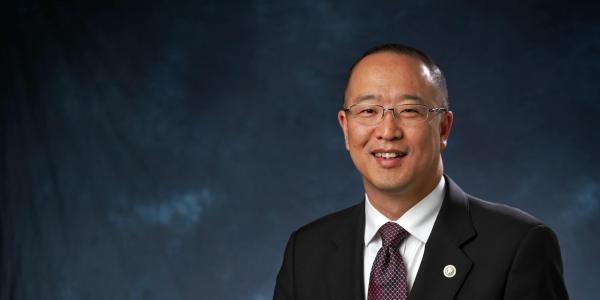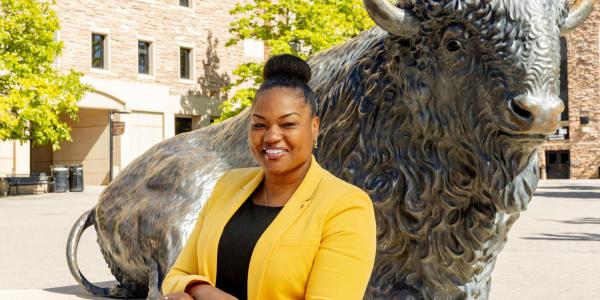
Vice Chancellor for Infrastructure and Safety David Kang
The CU Boulder campus strategic imperatives make clear the common vision we all must strive to achieve: shape tomorrow’s leaders, be the top university for innovation, and positively impact humanity. That’s just as true for the Office of Infrastructure and Safety as it is for the College of Engineering and Applied Science or the College of Music.
As we look to the future at the University of Colorado Boulder, one of the great balancing acts we face is ensuring each program has not only enough space but also the optimal type of space to continue to thrive for decades to come and achieve those core objectives.
While the needs of a growing or changing program at CU Boulder might in some cases be clear, determining the best solution is rarely easy. Moving or expanding one program into a new building—or even renovating existing space—creates a cascade of follow-on decisions that must be made. Those include, but aren’t limited to, whether other programs must be moved, how deferred maintenance in aging facilities is addressed and whether programmatic changes are in order for certain spaces.
It is in this context that our department of Planning, Design and Construction is embarking on a visioning process for strategic facilities planning. Campus Architect and Director of Planning and Design Bill Haverly is leading the effort with support from an executive committee that includes myself; Assistant Vice Chancellor for Planning, Design and Construction Chris Ewing; Vice Provost Mary Kraus; Executive Director of Admissions Kevin MacLennan; and Steve Ouellette, quality and continuous improvement manager in the Office of Information Technology.
The university will soon release a request for qualifications, seeking consultants who can help facilitate the endeavor. But the overall concept is straightforward and lends itself to collaboration from across campus.
Later this summer, we’ll kick off the process of meeting with all CU Boulder colleges and schools, as well as auxiliaries and support organizations, to get a sense for their individual visions and how facilities translate into support for those visions five, 10, even 30 years down the road. What is the anticipated size of the student body? How many students will be resident on our campus versus learning virtually online? Where will programs be located? What types of synergies between different colleges need to be nurtured? What research and teaching trends will drive program needs?
Programs and departments from around campus can expect to hear from the committee in the coming weeks as we set up initial meetings.
Understanding what future requirements and opportunities exist will help inform the next 10-year campus master plan update. But doing so will also help us meet the needs of today—those that are most pressing—while aligning with the needs of tomorrow. It will help us take a holistic approach to meeting end-user requirements for each building or renovation project across campus. We’ll be better positioned to optimize the use of existing spaces; identify themes and functions for our Main, East and South campuses; identify program priorities and inform deferred maintenance project prioritization.
Once we’ve got this collective vision laid out, we’ll perform an analysis that helps create the roadmap for how to best achieve these goals. Addressing each individual space need of a college or program in a way that best aligns with this vision—and does so efficiently and cost-effectively—will include a thorough exploration of options, be they renovation, new construction or even perhaps leasing spaces in the market. Tackling our massive deferred maintenance backlog in a strategic way will also be key to creating long-term sustainability and resiliency on a campus where more than half of the buildings are more than 50 years old.
Every decision we make will be based on a thorough understanding of program requirements, robust data analytics and market research. Ultimately, every decision must also maximize the return on our investments in support of the overall mission and vision of CU Boulder.
A team effort and a university-first approach will be required to create this vision. But taking an integrated campus-wide approach will help ensure facilities play their own positive role in achieving CU Boulder’s strategic imperatives well into the future.
David Kang,
Vice Chancellor for Infrastructure and Safety



